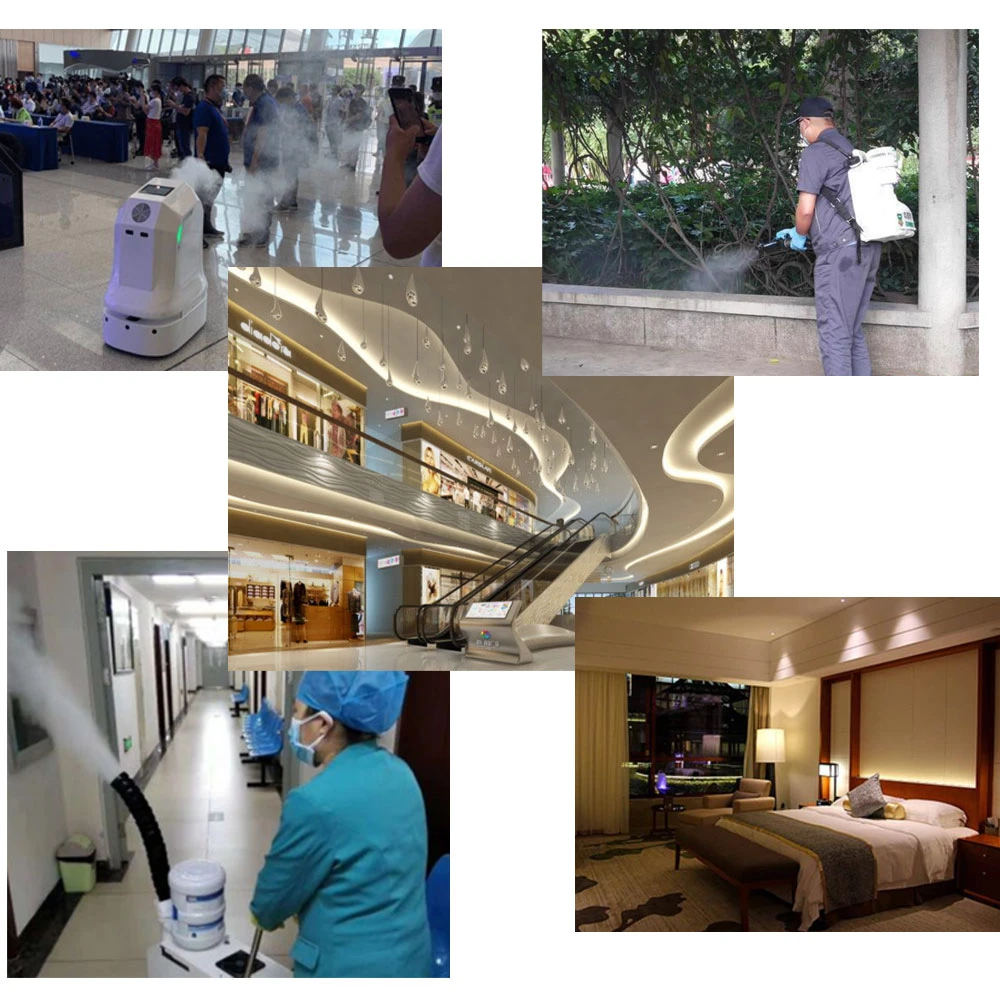In the modern office environment, the hygiene and safety of office buildings are of vital importance.
A large number of people moving in a relatively concentrated space increases the risk of pathogen transmission.
How to effectively disinfect and ensure the health of office staff has become a key task in the management of office buildings.
Hypochlorous acid generators, as an advanced disinfection device, are gradually emerging in office buildings, providing strong support for creating a safe and healthy office environment.

The working principle of hypochlorous acid generator
A hypochlorous acid generator converts ordinary water and a small amount of additives (such as table salt, etc.)
into a disinfectant solution containing hypochlorous acid through specific technical means. Its core principles mainly include electrolysis methods, etc.
Take the common electrolysis of brine as an example. In the electrolytic cell, an electric current passes through the brine solution, and a series of chemical reactions occur.
Chloride ions lose electrons at the anode to form chlorine gas, which reacts with water to produce hypochlorous acid and hydrochloric acid. The chemical reaction equation is roughly as follows:

The advantages of hypochlorous acid in sterilization and disinfection
1,1 Hypochlorous acid has a powerful bactericidal ability
Hypochlorous acid has an extremely strong oxidizing capacity. Its bactericidal effect is mainly based on the following mechanism:
On the one hand, hypochlorous acid molecules (HClO) are electrically neutral, small in size, and can easily penetrate the cell membranes of bacteria,
viruses and other microorganisms. After entering the interior of the cell, it will undergo oxidation reactions with important biological macromolecules such as nucleic acids and proteins within the cell,
destroying their structure and function. As a result, the microorganisms lose their activity and are unable to carry out normal metabolic, reproductive and other life activities,
achieving the purpose of sterilization and disinfection. Studies show that hypochlorous acid can efficiently kill common bacteria such as Escherichia coli, Staphylococcus aureus,
and Candida albicans, as well as viruses like influenza virus and norovirus within a short period of time. For instance,
under the action of hypochlorous acid solution with an effective chlorine concentration of 50-80 PPM, 99.99% of the novel coronavirus
can be killed within one minute, and it also has a significant inactivation effect on highly drug-resistant pathogens such as norovirus.
1,2 Hypochlorous acid is safe for sterilization and disinfection
Compared with traditional chlorine-containing disinfectants such as sodium hypochlorite (the main component of 84 disinfectant),
the hypochlorous acid disinfectant produced by hypochlorous acid generators is safer. Sodium hypochlorite solution is alkaline and highly corrosive.
It can irritate human skin, respiratory tract, etc. Improper use may also cause environmental pollution.
The pH value of hypochlorous acid disinfectant is close to neutral and has extremely low irritation to the human body. At a reasonable usage concentration,
hypochlorous acid can be directly used for hand cleaning, skin wound disinfection, etc., without the need for rinsing.
It is particularly suitable for sensitive groups such as the elderly and children. Meanwhile,
hypochlorous acid will decompose into water and salt after its action, without leaving any harmful residues, which is in line with the concept of green environmental protection.
1,3 Hypochlorous acid has a wide range of applications
Hypochlorous acid disinfectant can be applied to various areas and object surfaces of office buildings in multiple ways. It can be used for air disinfection.
Through atomization equipment, hypochlorous acid solution is atomized into tiny particles and dispersed in the air,
which can effectively kill suspended bacteria and viruses in the air and reduce the risk of droplet transmission of diseases.
This disinfection method is particularly suitable in enclosed Spaces where people are present, such as offices and meeting rooms,
and it will not cause adverse effects on the human body. For surfaces of objects, such as door handles, elevator buttons, office desks and chairs,
computer keyboards, filing cabinets and other frequently touched areas, disinfection can be carried out by spraying or wiping,
which can quickly cut off the route of virus transmission through contact. In addition, hypochlorous acid can also be used for floor disinfection in public areas such as bathrooms,
corridors and staircases, as well as for disinfection in air conditioning and ventilation systems, comprehensively ensuring the environmental hygiene of office buildings.
1,4 Disinfection of ventilation systems with hypochlorous acid
Central air conditioning ventilation systems are widely use in office buildings. However, after long-term operation, dust is prone to accumulate inside the air ducts,
and bacteria and viruses tend to breed, becoming one of the sources of indoor air pollution.
Combining the hypochlorous acid generator with the air conditioning ventilation system can achieve effective disinfection of the air conditioning system.
By introducing hypochlorous acid solution into the humidification section or fresh air inlet of the air conditioning unit, when air passes through,
hypochlorous acid can kill the microorganisms in the air and simultaneously inhibit the growth and reproduction of harmful microorganisms in the air ducts.
Regularly disassembling and cleaning the filters, fans and other components of the air conditioning system,
and soaking them in hypochlorous acid disinfectant for disinfection can further improve the hygiene level of the air conditioning and ventilation system and ensure the quality of indoor air.
FAQ
1.Is hypochlorous acid safe for disinfection in office buildings? Is it harmful to the human body?
Hypochlorous acid is a relatively safe disinfectant. It has weak acidity and strong oxidizing properties. After disinfection,
it can be reduce back to water without leaving any residual toxicity. At the normal usage concentration in office buildings (generally 50-200 PPM),
it causes little irritation to human skin and mucous membranes and does not produce harmful gases. However, although it is highly safe,
when conducting large-scale spray disinfection in crowd areas, it is recommend that people temporarily leave. After disinfection,
ventilate for a period of time to avoid inhaling a large amount of high-concentration hypochlorous acid mist and reduce potential irritation to the respiratory tract.
2,How effective is hypochlorous acid in disinfecting office buildings? Which germs can be killed?
Hypochlorous acid has a remarkable disinfection effect. It can quickly destroy the cell membranes and protein structures of bacteria,
viruses, fungi and other microorganisms, achieving the purpose of efficient sterilization and disinfection. In office buildings,
it can effectively kill common bacteria such as Escherichia coli, Staphylococcus aureus and Candida albicans,
as well as enveloped viruses such as influenza virus and novel coronavirus.
Studies show that hypochlorous acid at an appropriate concentration can achieve a sterilization rate of over 99.9% in a short period of time, ensuring the hygiene and safety of the office environment.
3,How should hypochlorous acid be correctly used in office buildings? What are the usage scenarios?
Hypochlorous acid can be use in various ways. For high-frequency contact surfaces such as office desks,
door handles, and elevator buttons, they can be wipe and disinfecte with a cloth dipped in hypochlorous acid solution.
For Spaces such as meeting rooms and offices, atomizing sprayers can be use to spray and disinfect the air and object surfaces.
In areas prone to bacterial growth such as bathrooms and tea rooms, hypochlorous acid solution can also be spray or rinsed.
When in use, please note that it should be prepare and used immediately to avoid long-term storage which may affect the disinfection effect. Also,
it must not be mix with chlorine-containing disinfectants or acidic cleaners to prevent the generation of harmful gases.
